During the flight over, I learned of a special exposition at the Grand Trianon – a 20th century interpretation of 18th century couture. I had not been to the Grand Trianon in at least ten years, so I decided this was the perfect opportunity to revisit the chateau and see the collection of couture gowns on display.
Anyone who has admired the luxury and beauty of gowns featured in films such as Dangerous Liaisons or Marie Antoinette and wondered what it must have been like to live at a time when women wore those gowns, will be comforted to know that those women and those gowns exist today.
The Grand Trianon is the major work of renowned architect Jules Hardouin-Mansart, the birth place of French tastes of the period, the perfect mix of sobriety and refinement. Only a ten minute walk from the Chateau de Versailles, it is one of the most beautiful, most unknown, and least visited palaces in France. The Grand Trianon receives a mere seven hundred thousand visitors each year, compared to six million visitors to the Chateau de Versailles.
Aside from the beauty of this architectural marvel and the furnishings within, the most amazing thing about the exhibition: I had to read the panels to know which gowns dated from 18th century and which dated from the 20th century.
Displayed among 18th century costumes, Aubusson tapestries, crystal chandeliers, and Gobelins rugs, stood mannequins dressed gowns from Dior, Chanel, Balenciaga and LaCroix to name a few.
Here is a sampling of some my favorites.
A pink taffeta, lace and ribbon gown from Vivienne Westwood’s “Vive La Cocotte” ready-to-wear collection of 1995, inspired by frivolty and powdery colors of 18th century France. The dress is displayed in the Empresses Boudoir. The small door to the left of the fireplace connects this room to a series of other rooms, including a kitchen.
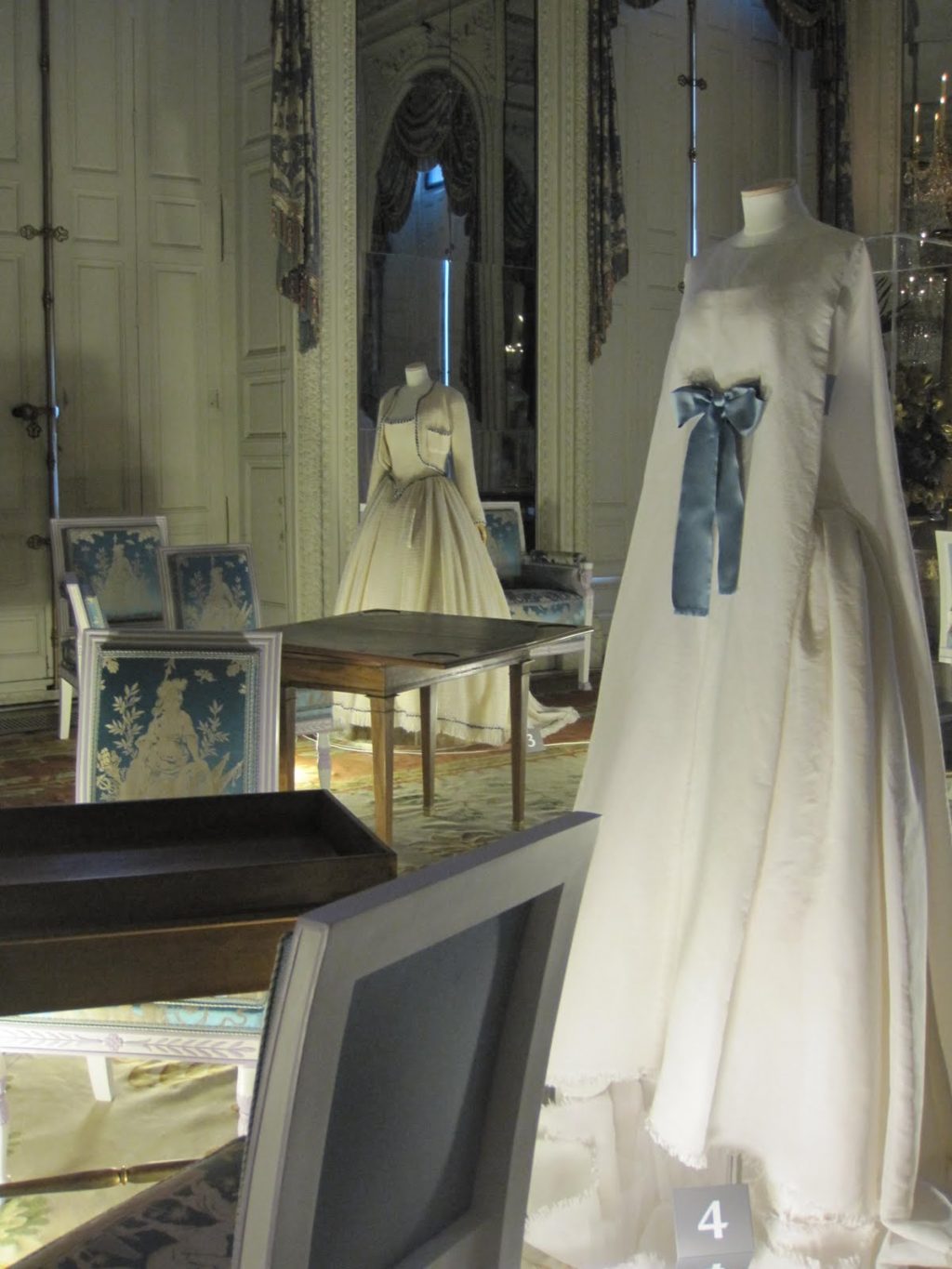
In the foreground, a white silk faille and blue satin ribbon dress from the Chanel spring-summer 2005 collection. This dress was inspired by an 18th century French “robe volonte” or sack-back gown, which was known throughout Europe as the “robe à la français.” It became very popular in the 1730’s. In the background, a bridal ensemble from the Chanel autumn-winter 1992-93 collection. The jacket and the dress are in ivory tweed fabric, lined with pearly white satin and trimmed with taffeta ribbon.
This was my favorite room in the chateau: The Room of Mirrors. It was Louis XIV’s great study, where he met his private council. The décor features my favorite color palette of blue and white.
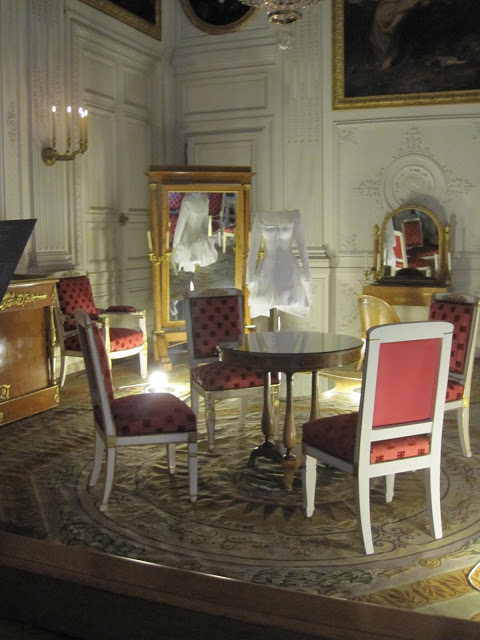
A white lace corset style dress from Azzedine Alaia’s 1992 ready-to-wear collection. The dress’s tightly laced up top is meant to evoke the whalebone corsets and wide hip panels of the 18th century, while the white lace cotton fabric is a nod to the “walking” or afternoon dress of the day.
The room still features the same décor of Louis XIV, with carved wood panels.
The “Antonia” evening gown from Pierre Balmain’s 1954 haute couture collection. The dress is satin embroidered with gold scrolls, pearl beading, red chiffon roses and green foliage. The workmanship was incredible and this was one of my favorite gowns. It was fun and flirtatious, but also sophisticated and demure.
Originally built as a chapel, this room became an antechamber in 1691, with many of the original features kept in place.
Finally, one of the most outrageous dresses of the exposition: the “Infante” ball gown from Thierry Mugler’s 1992-93 ready-to-wear collection. Thierry Mugler is known for highlighting a woman’s shape and demonstrating her power – this dress perfectly illustrates his design.

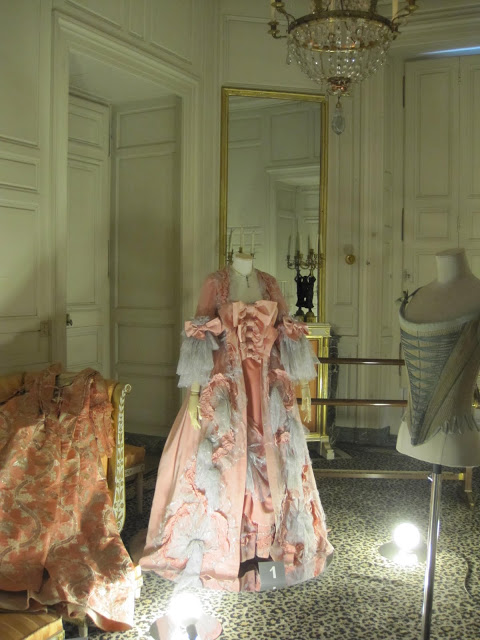
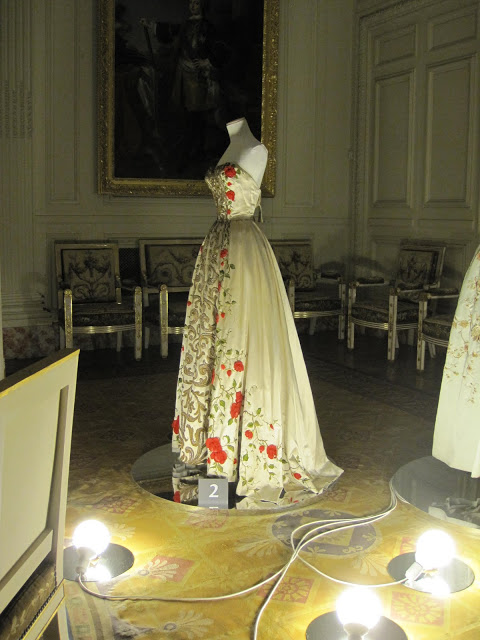
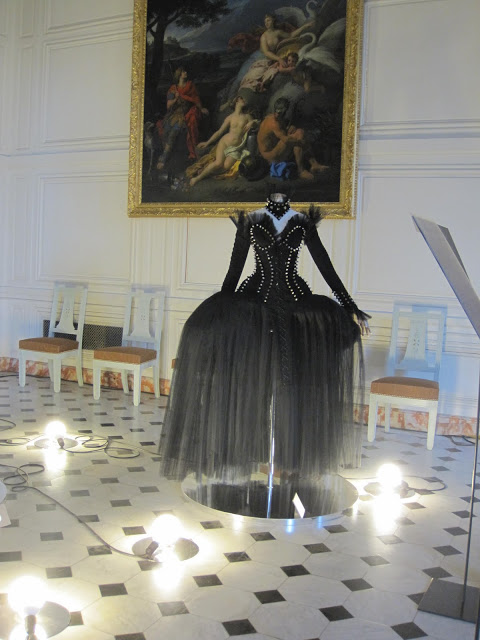


Ah, Jeannine, thank you so much for this wonderful trip of my fantasies to reality. Sometimes just hard to imagine how far fantasy can travel. I think I can match hair adornment to every gown possible with love, passion and power. My heart is beating music of joy and I'm so grateful for this journey of my dreams.HILDA
Thank you for your kind words. I’m so happy to know you enjoyed the post.
I am happy to have found you, Jeannine! The Antonia gown by Balmain is one of my favorites from the 1950s. I'm a published paper doll artist…I just finished a paper doll of Geneviève, one of the house models at Pierre Balmain. I am planning on rendering the Antonia gown to fit this paper doll, as Geneviève actually modeled it. Since I like to make my costumes for my paper dolls as 3D as possible, I will use an adhesive-backed gold glitter paper to reproduce the scroll work. Will be time-consuming, but, I think will be worth it in the end!Have a great week!Gregg Nystrom
I found your work online. It’s incredible and such an interesting art medium. I am sure you’ll replicate the Balmain dress beautifully.